A physics student took a number full of dry ice with a thermometer placed in ti .He strted supplying heat energy at constant rate by placing it on a heating device .The student observed no change in the thermometer reading even after 90 % of ice melted explain what happened to the heat energy supplied
When ice at 0∘C is changed in to water at 0∘C the energhy is used to increase the intermolecular spacing and to change in to the liquid state .The heat energy supplied is not used to increse the temperature of the substacne
Topper's Solved these Questions
- HEAT BOOK - PEARSON IIT JEE FOUNDATIONCHAPTER - HEAT EXERCISE - Level 3
7 Videos
- HEAT BOOK - PEARSON IIT JEE FOUNDATIONCHAPTER - HEAT EXERCISE - Test 1
15 Videos
- HEAT BOOK - PEARSON IIT JEE FOUNDATIONCHAPTER - HEAT EXERCISE - Level 1
47 Videos
- ElectricityBOOK - PEARSON IIT JEE FOUNDATIONCHAPTER - ElectricityEXERCISE - ASSESSMENT TEST (TEST-2)
15 Videos
- KINEMATICSBOOK - PEARSON IIT JEE FOUNDATIONCHAPTER - KINEMATICSEXERCISE - ASSESSMENT TEST (TEST 2 (SELECT THE CORRECT ALTERNATIVE)
15 Videos
Similar Questions
A physics student took a number full of dry ice with a thermometer placed in ti .He strted supplying heat energy at constant rate by placing it on a heating device .The student observed no change in the thermometer reading even after 90 % of ice melted explain what happened to the heat energy supplied
View SolutionA group of students went for an excursion to Shimla in the month of November. A science teacher also accompanied them. There the temperature fell to −10∘C. They took some ice cubes and subjected them to heating while keeping a thermometer in the container. The students monitored the readings of thermometer till the entire ice melted into water. All of them went to their science teacher and showed him their observations. He asked them to discuss among themselves and give a proper justification for the observations on the readings at various stages.
View Solution
Knowledge Check
The temperature of the substance remains constant when it is melting and boiling though some quantity of heat is supplied. What happens to this energy?
AIt is dissipated as sound energyBIt is consumed to increase the energy of the moleculesCIt is used to change the state of the substanceDIt is still an unsolved problem in science.
A group of students went for an excursion to Shimla in the month of November. A science teacher also accompanied them. There the temperature fell to −10∘C. They took some ice cubes and subjected them to heating while keeping a thermometer in the container. The students monitored the readings of thermometer till the entire ice melted into water. All of them went to their science teacher and showed him their observations. He asked them to discuss among themselves and give a proper justification for the observations on the readings at various stages.
View SolutionWhen ice melts, the change in internal energy is greater than the heat supplied. Why ?
View Solution(1) Take a few pieces of ice in a glass beaker as shown in figure.
(2) Insert the bulb of a thermometer in ice and measure its temperature.
(3) Put the beaker on a stand and heat the ice using a burner.
(4) Record the temperature using the thermometer after every minute.
(5) As the ice is heated,it starts melting. Stir the mixture of ice and water.
(6) Continue the heating even after ice starts melting.
(7) Draw a graph of temperature versus time.
Explain the role of latent heat in the change of state of a substance.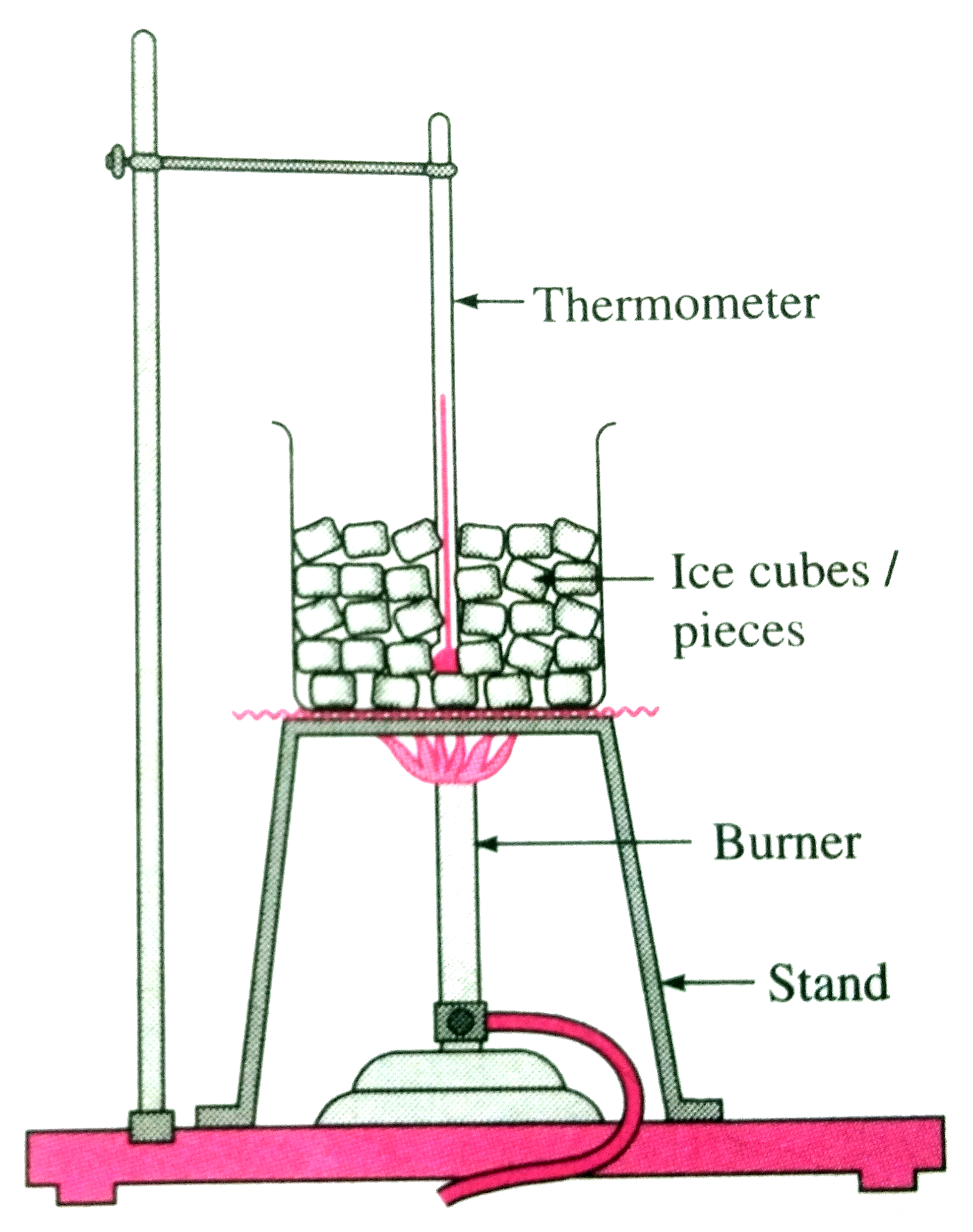
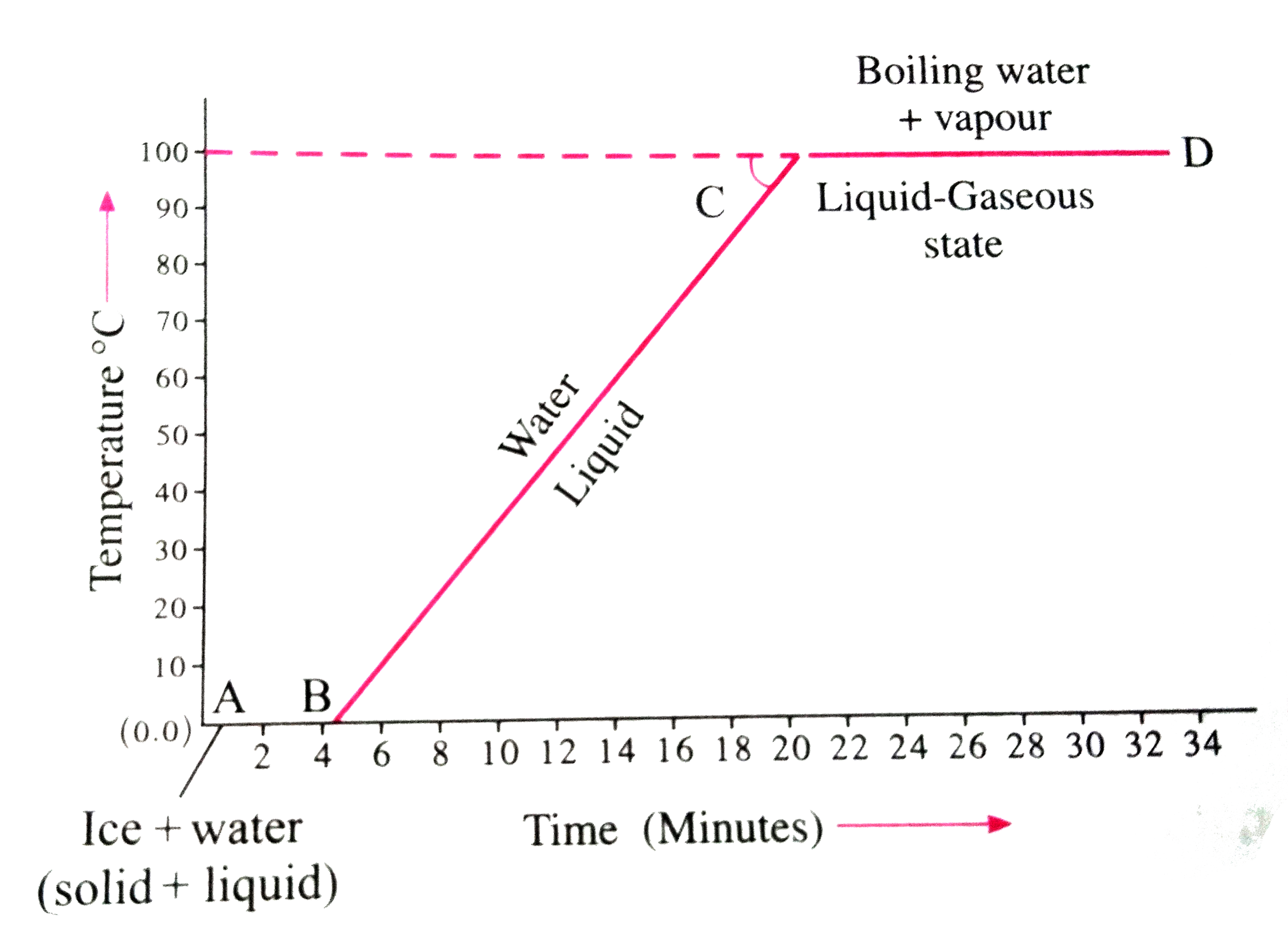
View Solution(1) Take a few pieces of ice in a glass beaker as shown in figure.

(2) Insert the bulb of a thermometer in ice and measure its temperature.
(3) Put the beaker on a stand and heat the ice using a burner.
(4) Record the temperature using the thermometer after every minute.
(5) As the ice is heated,it starts melting. Stir the mixture of ice and water.
(6) Continue the heating even after ice starts melting.
(7) Draw a graph of temperature versus time.

Explain the term latent heat of vaporization.
View Solution
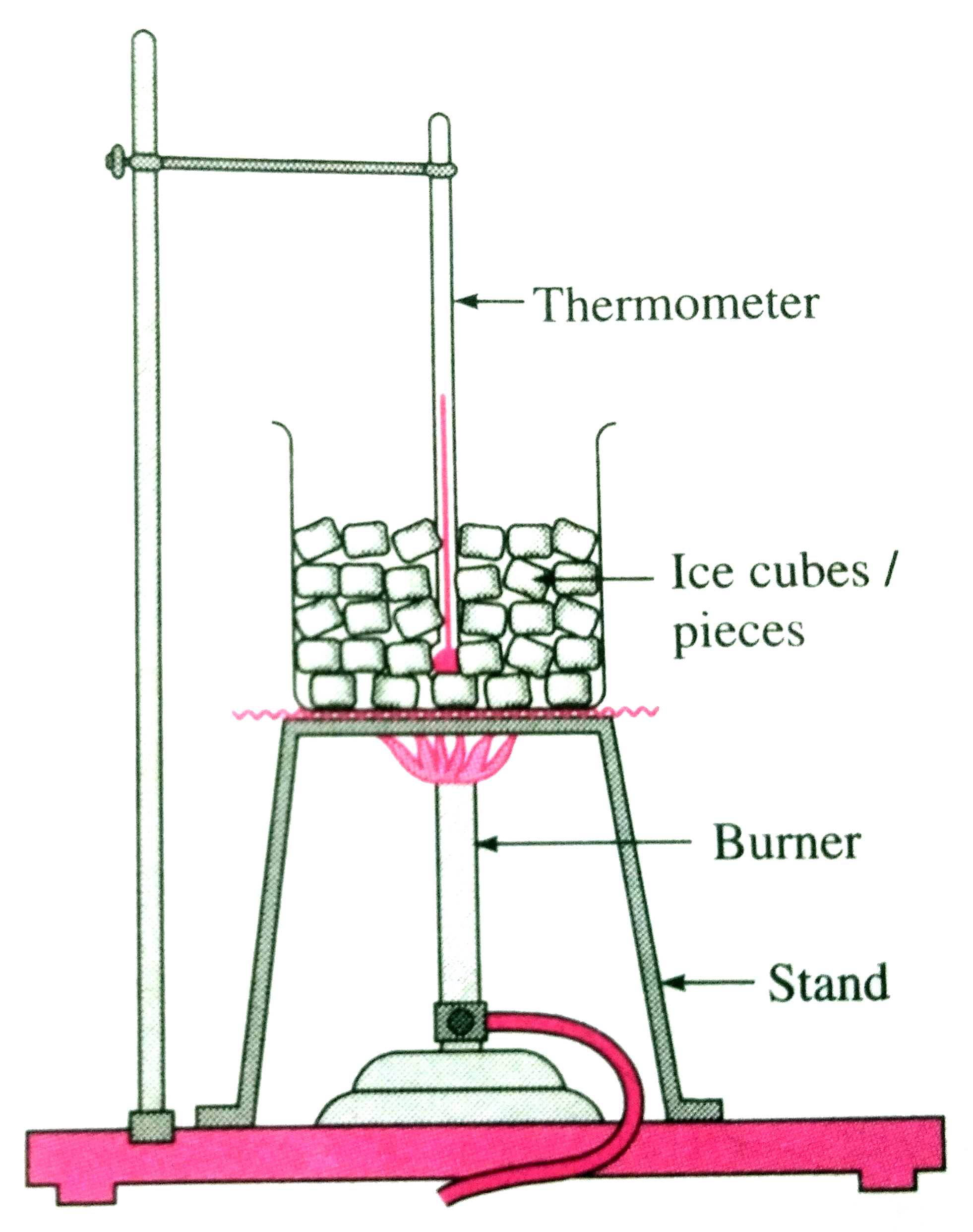
(1) Take a few pieces of ice in a glass beaker as shown in figure.
(2) Insert the bulb of a thermometer in ice and measure its temperature.
(3) Put the beaker on a stand and heat the ice usinga burner.
(4) Record the temperature using the thermometer after every minute.
(5) As the ice is heated,it starts melting. Stir the mixture of ice and water.
(6) Continue the heating even after ice starts melting.
(7) Draw a graph of temperature versus time.
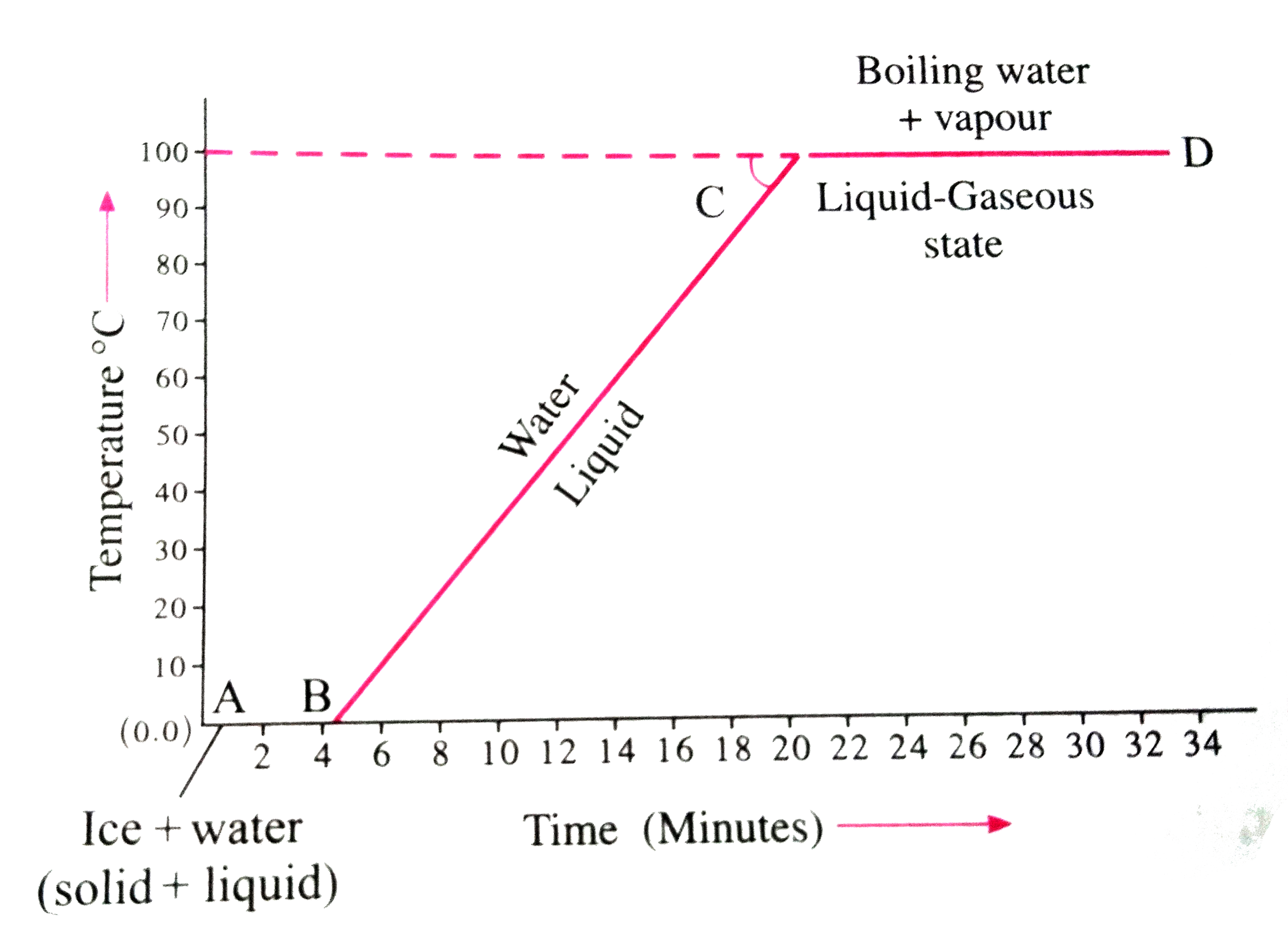
Explain the following temperature vs time graph.
View Solution(1) Take a few pieces of ice in a glass beaker as shown in figure.
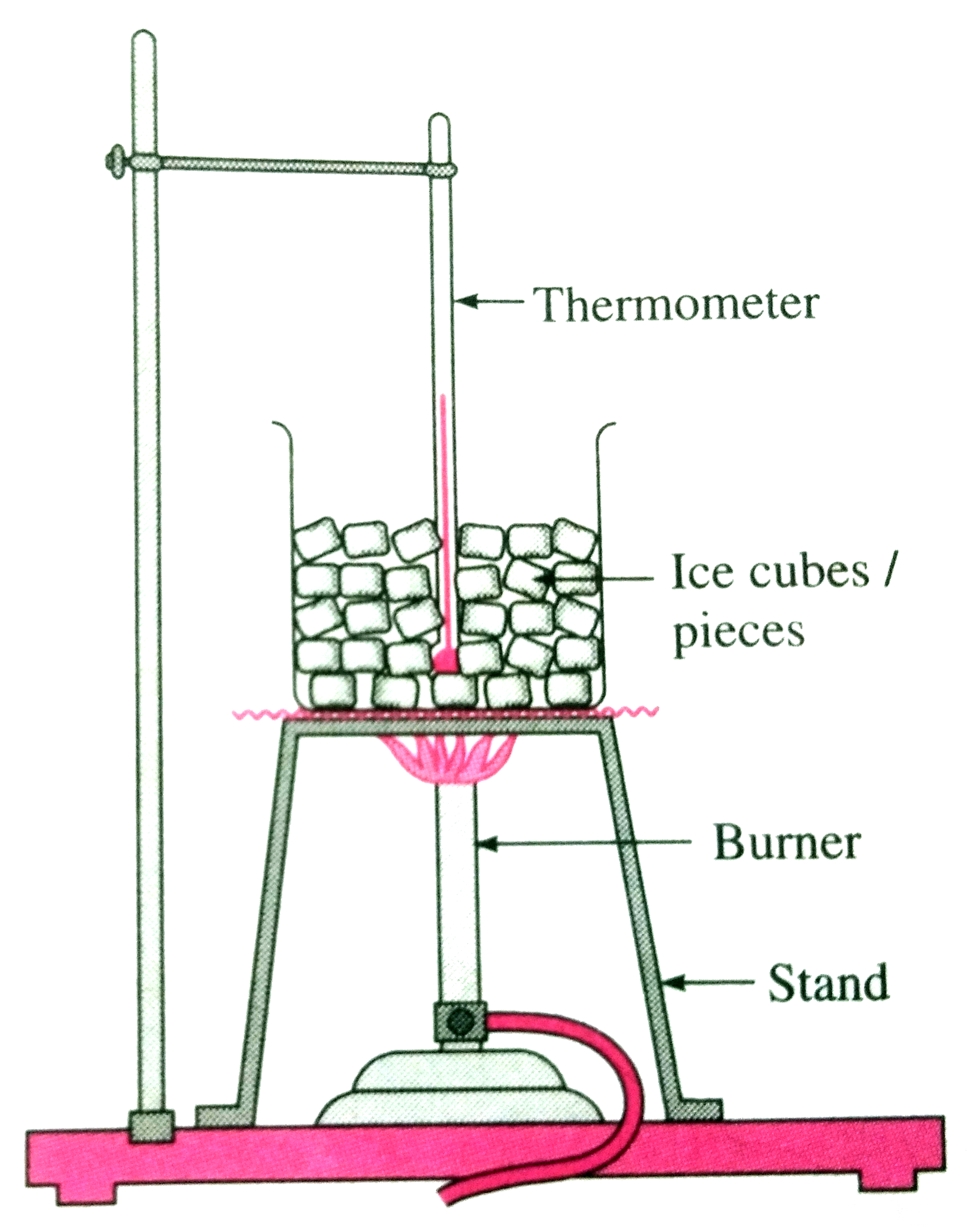
(2) Insert the bulb of a thermometer in ice and measure its temperature.
(3) Put the beaker on a stand and heat the ice using a burner.
(4) Record the temperature using the thermometer after every minute.
(5) As the ice is heated,it starts melting. Stir the mixture of ice and water.
(6) Continue the heating even after ice starts melting.
(7) Draw a graph of temperature versus time.

Define boiling point of a liquid. OR What is boiling point of a liquid ?
View Solution(1) Take a few pieces of ice in a glass beaker as shown in figure.
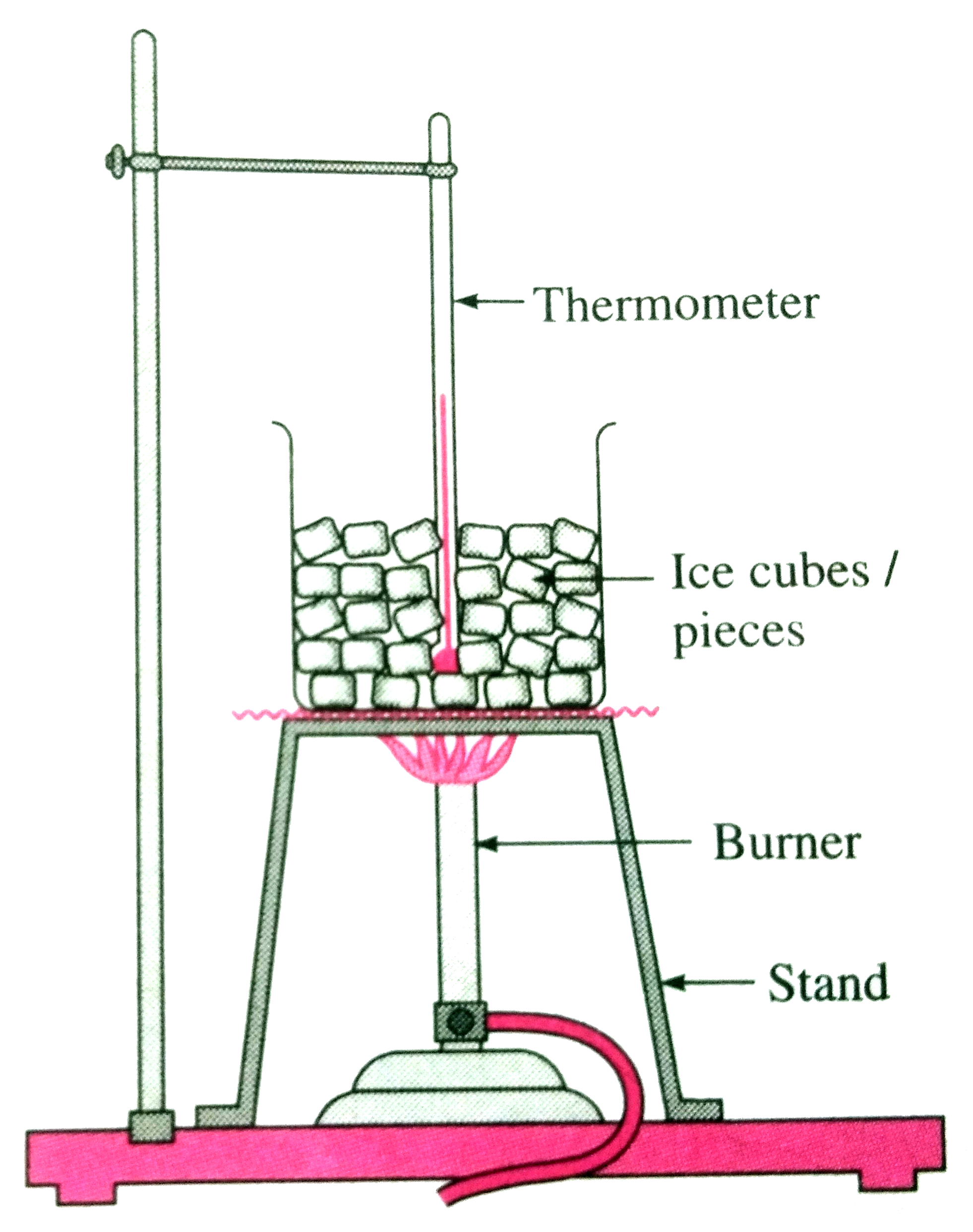
(2) Insert the bulb of a thermometer in ice and measure its temperature.
(3) Put the beaker on a stand and heat the ice using a burner.
(4) Record the temperature using the thermometer after every minute.
(5) As the ice is heated,it starts melting. Stir the mixture of ice and water.
(6) Continue the heating even after ice starts melting.
(7) Draw a graph of temperature versus time.
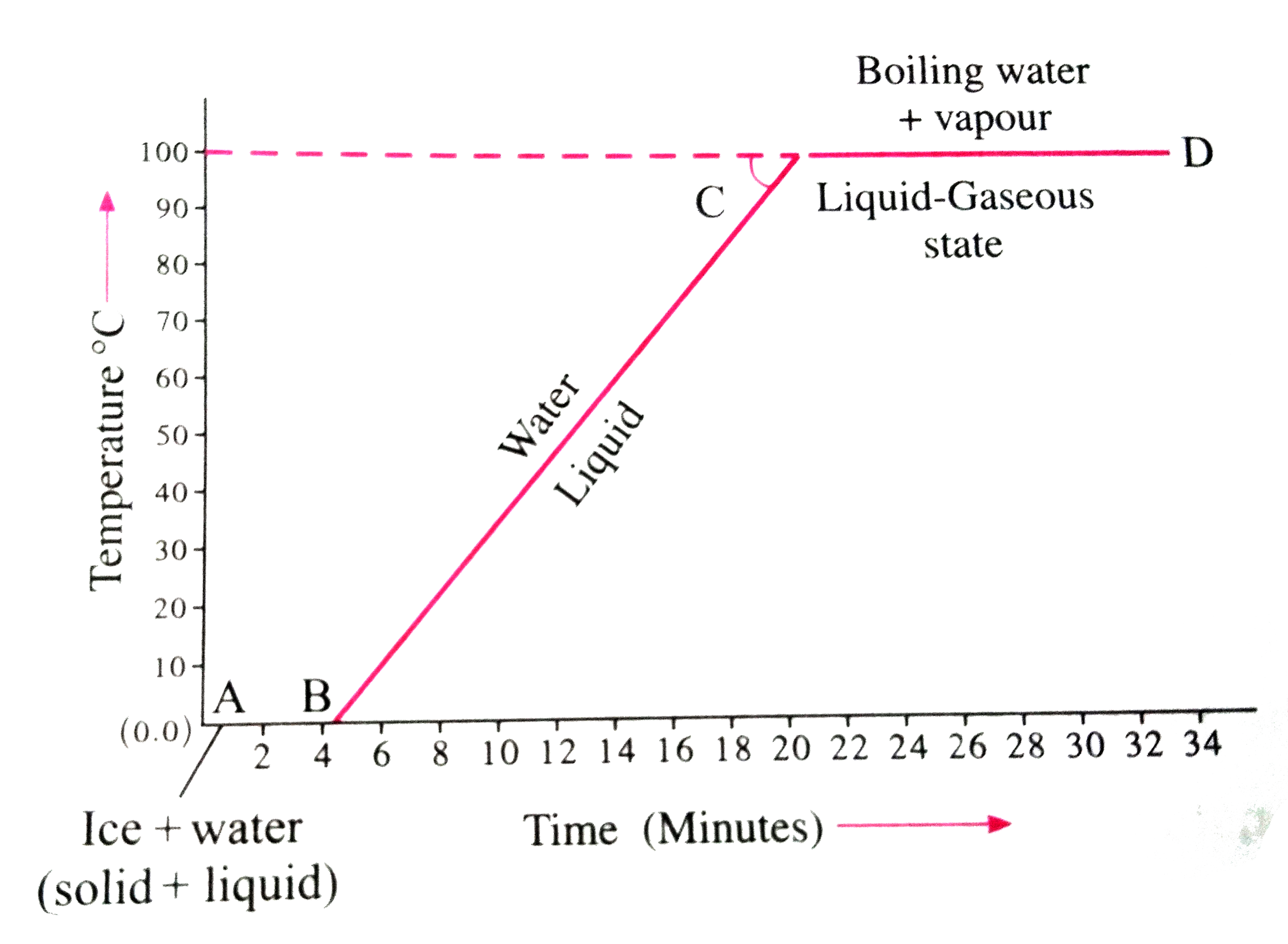
The specific latent heat of fusion of ice is 80cal/g .Explain this statement .
View Solution
